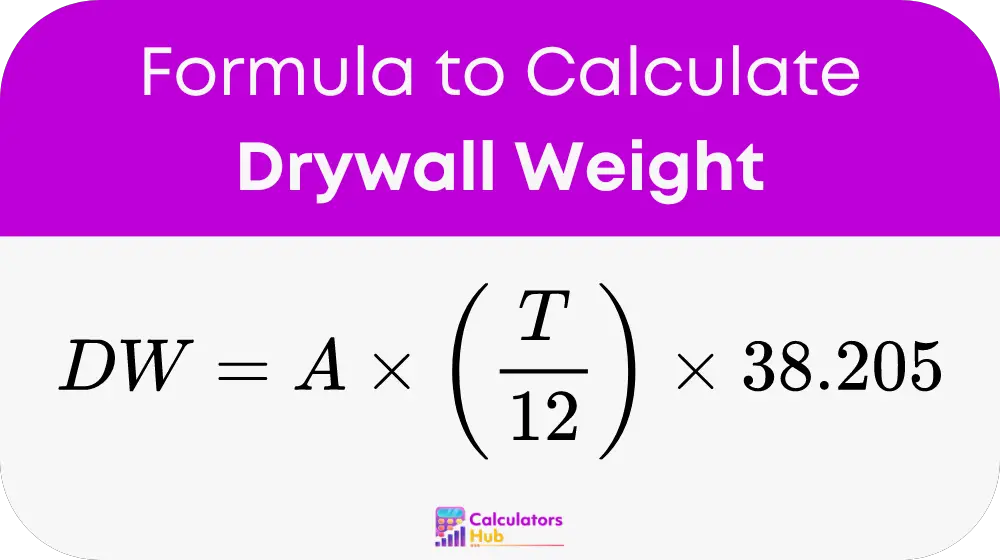The Drywall Weight Calculator is an essential tool designed to compute the weight of drywall sheets based on their size and thickness. By inputting the total area of the drywall and its thickness, users can determine the weight in pounds, aiding in logistics planning and ensuring that structures can support the calculated weight.
Formula of Drywall Weight Calculator
To calculate the weight of drywall, use the following formula:

Where:
- DW is the drywall weight in pounds.
- A is the total area of the drywall in square feet (ft²).
- T is the drywall thickness in inches (in).
- 38.205 is a conversion factor that accounts for the density of standard drywall in pounds per cubic foot.
Table of Common Drywall Sizes and Weights
Below is a table of standard drywall sheet sizes and their estimated weights calculated using the formula:
| Drywall Size (ft²) | Thickness (in) | Weight (lbs) |
|---|---|---|
| 32 | 0.5 | 20.1 |
| 48 | 0.5 | 30.2 |
| 32 | 0.625 | 25.1 |
| 48 | 0.625 | 37.7 |
This table serves as a quick reference for estimating drywall weight without performing detailed calculations for each project.
Example of Drywall Weight Calculator
Let's calculate the weight of a drywall panel that is 50 square feet in area and 0.5 inches thick using our formula:
DW = 50 * 0.5 / 12 * 38.205 = 79.6 lbs
This example shows how the calculator can be used to quickly estimate the weight of standard drywall panels.
Most Common FAQs
A1: Yes, but keep in mind that coatings or treatments may alter the weight slightly. For precise calculations, consult with the material provider.
A2: Measure the height and width at the widest points and calculate the area as if it were a rectangle. This provides a close approximation.